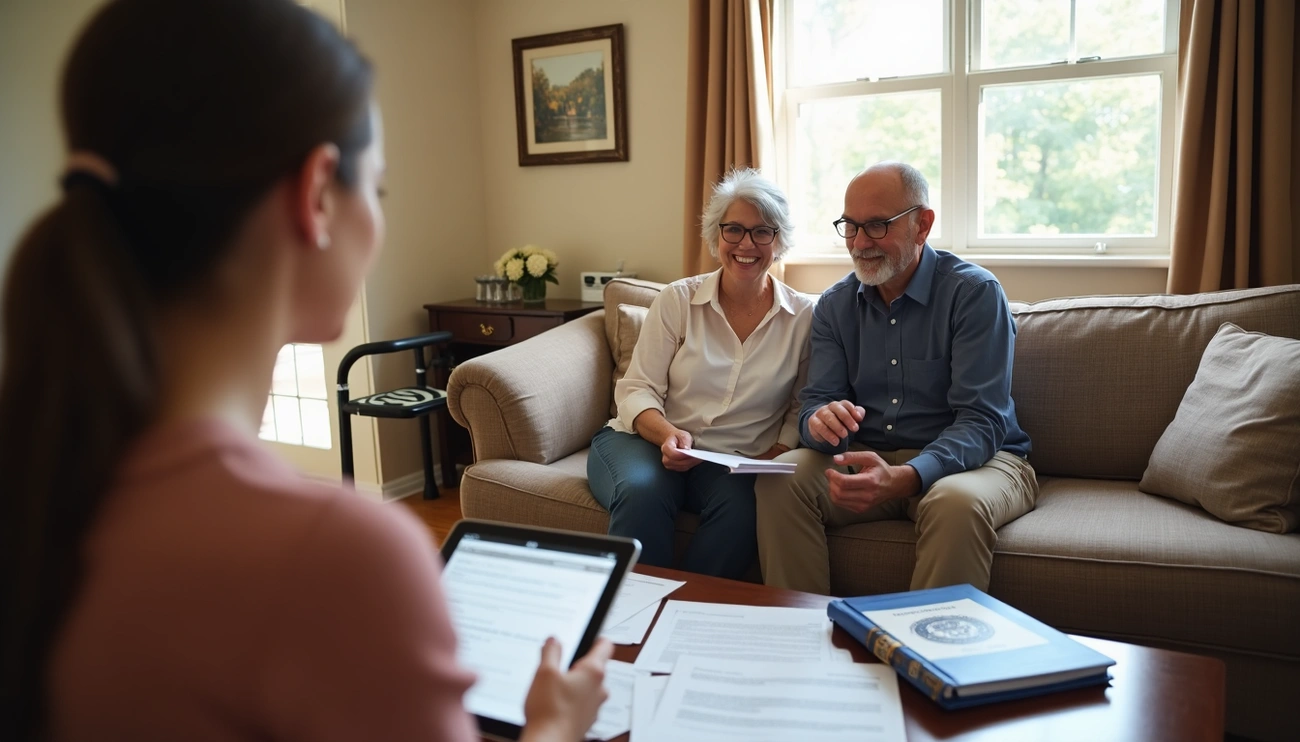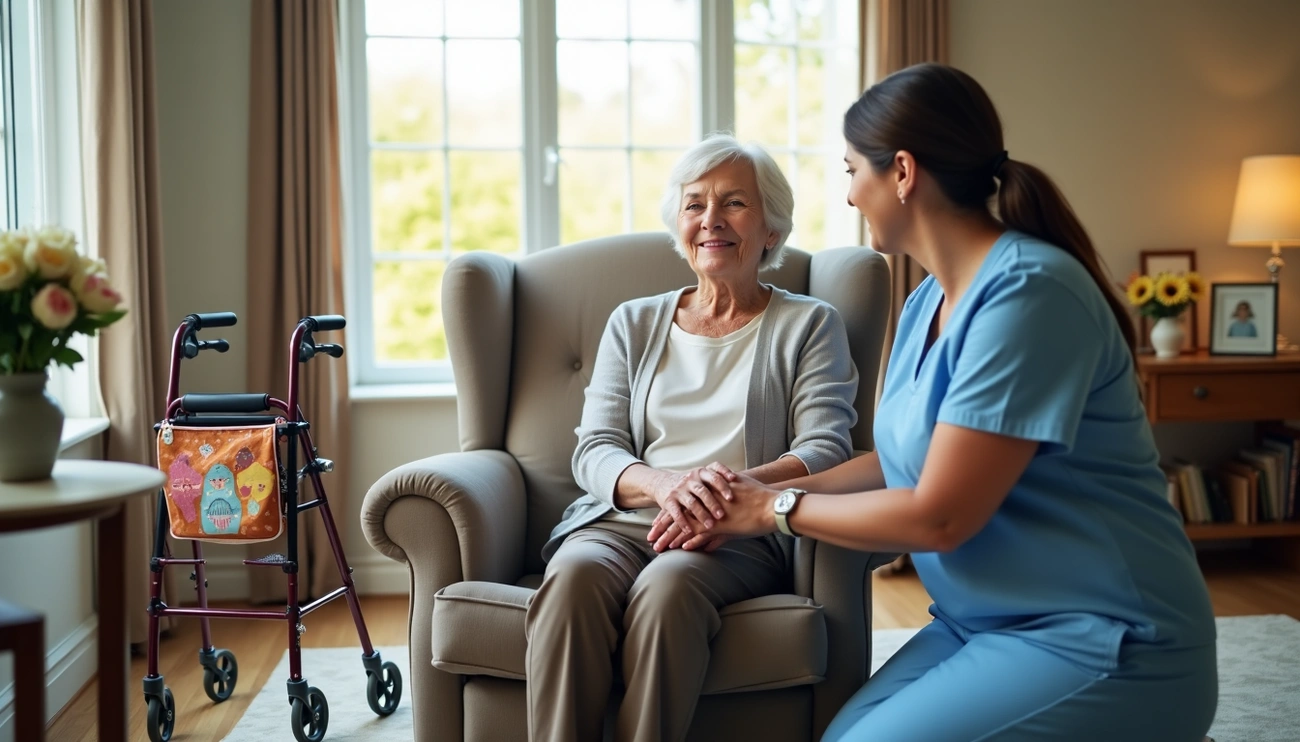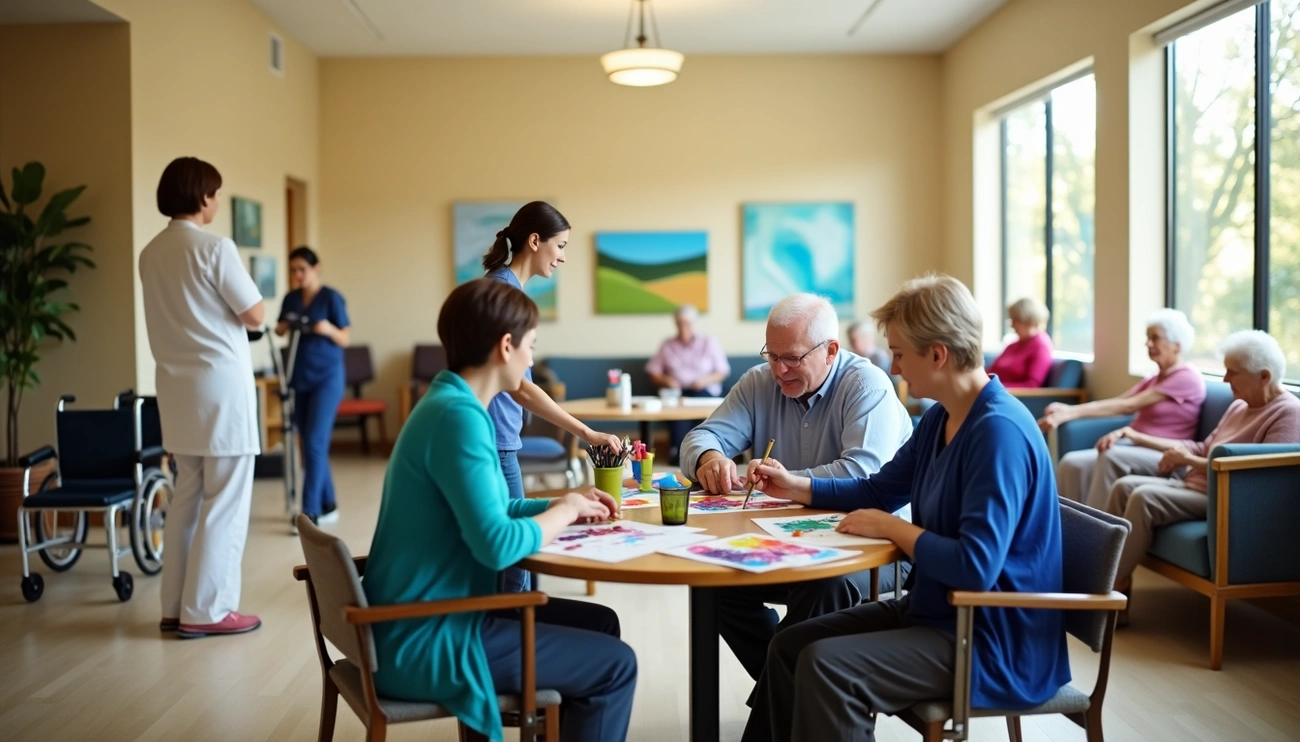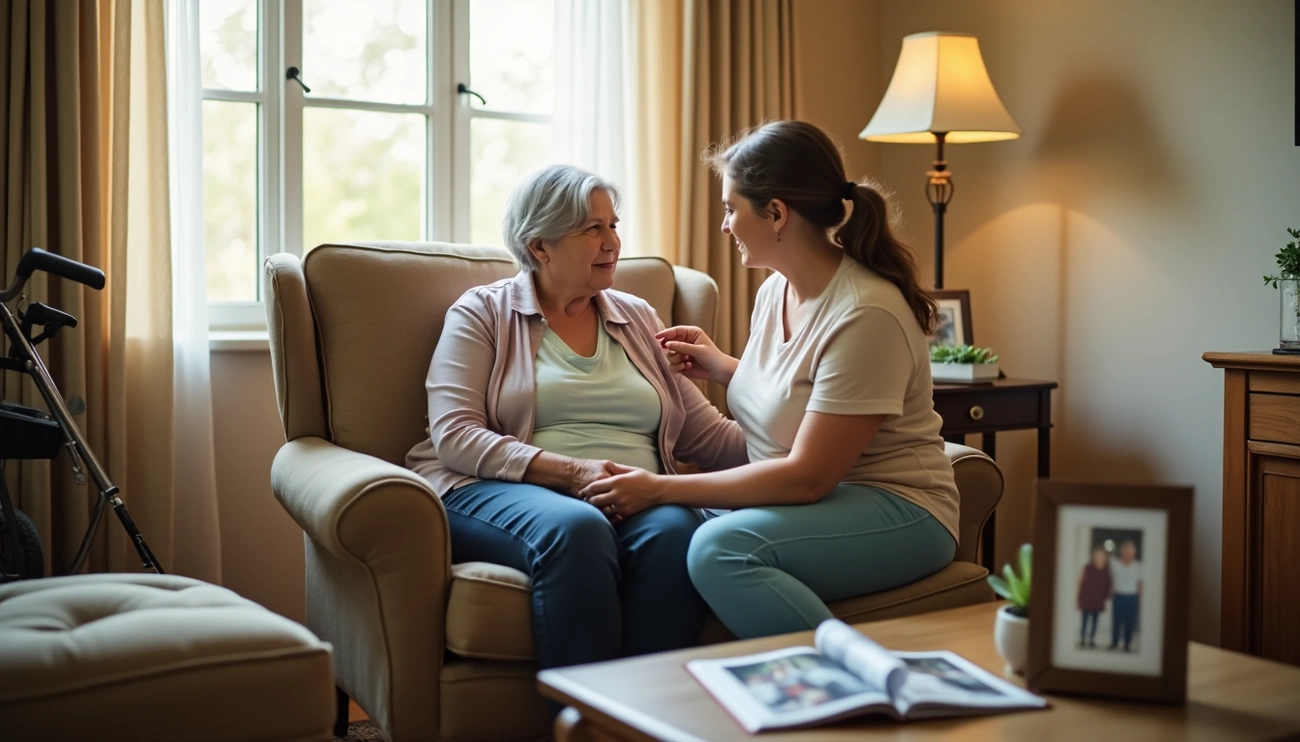Loneliness in elderly adults is as harmful to health as smoking 15 cigarettes daily, according to research on aging and isolation. Approximately one in three older adults report feeling lonely, with mortality risks comparable to established health threats like smoking and obesity.
Social isolation increases heart disease and stroke risk by 30%, researchers found. The condition also contributes to depression, cognitive decline, and obesity. These findings suggest addressing loneliness in seniors extends beyond improving quality of life to potentially extending lifespan.
Caregivers typically prioritize physical health needs for aging parents while social connections receive less attention. This oversight occurs naturally as limited mobility creates barriers to socialization, and many seniors cannot maintain social networks independently.
Evidence indicates that social engagement significantly improves elderly health outcomes. Regular social activities enhance overall health, happiness, and sleep quality for older adults. Practical approaches to combating isolation can help elderly parents rebuild social connections and improve their daily experiences.
This guide examines effective activities for seniors experiencing isolation and provides solutions for elderly loneliness that facilitate reconnection with others.
Understanding Elderly Loneliness and Its Impact
Loneliness affects approximately 1 in 3 adults in the U.S., with prevalence increasing significantly among older populations. This condition represents more than an emotional challenge for elderly parents—it constitutes a serious health risk requiring intervention.
Why loneliness increases with age
Death of spouses and friends removes primary social connections for many seniors. Statistics show about 2 million people in England over 75 live alone, with more than a million reporting they go over a month without speaking to anyone.
Retirement eliminates daily workplace interactions that previously provided regular social contact. Physical limitations and chronic health conditions restrict mobility and social engagement opportunities for older adults. Aging parents often experience declines in cognitive and physical health, reduced productive roles, and significant social status changes.
Hearing loss further contributes to social isolation among seniors. The condition makes conversations difficult to follow, turning potentially enjoyable social interactions into frustrating experiences.
Health risks linked to elderly isolation
Research has documented extensive health consequences from elderly isolation. Studies connect social isolation and loneliness to increased risks of high blood pressure, heart disease, obesity, immune system weakening, anxiety, depression, cognitive decline, and Alzheimer’s disease.
Loneliness impacts mortality at rates comparable to established risk factors including smoking, obesity, and physical inactivity. The condition alters immune system cells in ways that promote inflammation, which creates elevated chronic disease risk when sustained over time.
How to recognize signs of loneliness
Detecting loneliness in elderly parents requires observing subtle behavioral changes:
- Social withdrawal – Avoiding phone calls, texts, and visits from friends and family
- Appetite changes – Skipping meals or showing reduced interest in eating
- Loss of interest – Declining invitations or abandoning previously enjoyed hobbies
- Overwhelming feelings – Becoming overwhelmed by even simple tasks
- Communication difficulties – Trouble understanding conversations or finding words
- Physical symptoms – Unexplained fatigue, headaches, or weakened immune response
- Sleep disturbances – Changes in sleep patterns, which may connect to depression
Early identification of these indicators enables timely intervention before isolation significantly impacts health. Social activities for elderly parents serve as essential health interventions rather than simply time-filling exercises. These engagements actively support both physical and mental wellbeing among older adults.
Research Shows Social Activities Crucial for Elderly Mental Health
Finding meaningful activities plays a key role in combating senior loneliness, researchers report. Regular social engagement improves mood while enhancing physical health and cognitive function.
Community Centers Offer Structured Social Opportunities
Older Adult Centers (OACs) provide activities specifically designed for seniors seeking new connections. These facilities typically feature arts and crafts, music programs, recreational day trips, and holiday celebrations. Many communities also host cultural enrichment through initiatives like SU-CASA, where professional artists lead creative activities at senior centers. Local senior center directories help identify nearby options, though calling ahead about activity schedules remains advisable.
Book Clubs Build Intellectual and Social Connections
Book discussion groups combine intellectual stimulation with social interaction. The AARP Girlfriend Book Club counts nearly 70,000 members and hosts monthly author discussions. Online platform Goodreads offers genre-focused groups, with over 16,500 members in their Choice Awards Book Club alone. Local libraries and senior centers frequently host in-person reading groups. These discussions naturally encourage perspective sharing, creating deeper connections among participants.
Gardening Groups Provide Physical and Social Benefits
Garden clubs deliver both exercise and community engagement. Members typically share plants, exchange gardening tips, and collaborate on community beautification projects. Research indicates seniors in gardening clubs experience multiple benefits spanning restoration, attachment, physical improvement, and identity enhancement.
Walking Groups Combine Exercise with Companionship
Walking groups pair physical activity with social interaction. Research shows walking with others increases accountability and helps seniors connect with people sharing similar goals. These groups typically accommodate various fitness levels, making participation accessible for most seniors.
Arts Programs Support Cognitive Health
Arts participation reduces effects of physical and cognitive conditions in aging populations. Organizations like Arts for the Aging deliver multidisciplinary workshops spanning visual arts, performing arts, and literature. These creative activities foster self-expression while building meaningful connections meaningful connections among participants.
Simple Lifestyle Changes Reduce Elderly Isolation, Research Shows
Small adjustments to daily routines can significantly decrease loneliness in seniors, according to multiple studies on aging and social health. These changes require minimal effort but provide substantial benefits for elderly individuals experiencing isolation.
Pet ownership decreases loneliness by 36%
Seniors with pets are 36% less likely to report feelings of loneliness compared to those without animal companions. Health benefits extend beyond emotional wellbeing, with pet owners over 65 visiting doctors 30% less frequently than non-pet owners.
Research indicates pet ownership creates opportunities for social engagement, with pet owners 60% more likely to meet neighborhood residents compared to those without pets. The daily care routines provide structure while giving seniors a renewed sense of purpose.
Cats or small dogs using pee pads may be more suitable for elderly individuals with mobility limitations. Senior animals, typically calmer and less demanding, often make ideal companions for older adults.
Daily social routines improve mortality outcomes
Regular social engagement should rank alongside essential needs like food and water, researchers suggest. Studies demonstrate social isolation increases all-cause mortality risk by 29% and functional decline risk by 59%.
Effective daily social activities for seniors include:
- Scheduled family and friend calls
- Regular neighbor conversations
- Religious service participation
- Daily walks in community areas
Volunteering improves health in 80% of seniors
Among adults 55 and older participating in federal volunteer programs, approximately 80% reported good to excellent health compared to only 50% of non-volunteers. For seniors with depression symptoms, 70% experienced symptom reduction after beginning volunteer work.
AmeriCorps Seniors connects individuals 55+ with service opportunities matching their interests and abilities. After one year of participation, 88% of previously isolated volunteers reported decreased loneliness.
The volunteer experience particularly benefits individuals struggling with purpose after retirement or becoming empty nesters. These activities create meaningful connections while allowing seniors to make valuable societal contributions.
Digital tools offer effective solutions for elderly isolation when properly implemented, according to multiple research studies on aging and technology adoption. These technologies provide crucial social connections for seniors facing mobility challenges or geographic separation from family.
Video calling platforms allow face-to-face interaction regardless of distance, researchers found. Studies show older adults who regularly use social media report significantly reduced feelings of isolation. Facebook remains the dominant platform among seniors, with 83% of social media users aged 65+ identifying it as their preferred network.
Specialized devices eliminate common technological barriers for older adults. Systems like CallGenie connect to existing televisions and answer incoming calls automatically without requiring user input. These television-based solutions prove particularly valuable for seniors with dementia or limited technical abilities.
Virtual learning communities provide dual benefits of education and socialization for older adults. Platforms like GetSetUp host thousands of interactive classes designed specifically for seniors, with sessions available at all hours. Senior Planet offers similar programming focused on technology skills, fitness routines, and financial literacy.
These online spaces facilitate both skill development and friendship formation among participants. Virtual book discussions, cooking demonstrations, and museum tours have gained significant popularity, according to senior program coordinators.
Caregivers play a crucial role in technology adoption among seniors. For individuals struggling with complex interfaces, simplified devices like CallGenie or ONSCREEN require minimal technical knowledge with single-button operation. Digital games provide alternative entry points to technology, with crossword puzzles, Scrabble, and interactive applications offering engaging experiences for new users.
Consistent practice remains essential for technology adoption – scheduling regular video calls instead of traditional phone conversations helps seniors develop comfort with digital tools.
Online support groups connect caregivers facing similar challenges. The Family Caregiver Alliance facilitates multiple communities, including specialized groups for LGBTQ+ caregivers and those under 40.
These virtual networks create protected spaces for sharing experiences and finding emotional support – critical resources for maintaining caregiver wellbeing while supporting elderly parents.
Studies Show Multiple Approaches Effective in Combating Elderly Loneliness
Addressing loneliness in elderly parents requires identifying and implementing appropriate interventions, research indicates. Evidence throughout this report demonstrates that social isolation affects seniors both physically and emotionally, with health impacts comparable to smoking 15 cigarettes daily.
Solutions range from simple lifestyle adjustments to more structured activities. Establishing daily social routines or introducing pet companionship significantly reduces isolation feelings in older adults, according to multiple studies. Community engagement through local clubs, walking groups, and volunteer opportunities provides both social connection and sense of purpose for seniors.
Technology offers additional tools for maintaining relationships, especially for seniors with mobility challenges or those living far from family. Video calling platforms and simplified digital interfaces help bridge distance gaps when in-person interaction isn’t possible.
Early recognition of loneliness signs allows for timely intervention before isolation creates serious health consequences. Regular assessment of social wellbeing represents an essential component of comprehensive elder care, researchers found.
Small, consistent efforts toward reducing isolation produce meaningful results in elderly populations. While addressing senior loneliness presents significant challenges, the practical approaches outlined above help older adults rebuild social connections and improve their daily experiences. Regular support from family members and caregivers proves crucial in helping seniors maintain dignity and genuine human connection during their later years.
FAQs
Q1. How can I help my elderly parent overcome loneliness? Encourage your parent to engage in social activities like joining local clubs, attending community events, or participating in hobby groups. Help them maintain connections with friends and family through regular calls or visits. Consider introducing them to technology for virtual socializing. Additionally, suggest volunteering opportunities or caring for a pet to provide companionship and purpose.
Q2. What are some signs that my elderly parent might be experiencing loneliness? Look for changes in behavior such as social withdrawal, loss of interest in previously enjoyed activities, changes in appetite or sleep patterns, and increased irritability or sadness. They may also express feelings of isolation or complain about lack of social interaction. Pay attention to physical symptoms like unexplained fatigue or frequent health complaints, which can sometimes be linked to loneliness.
Q3. How can technology help combat loneliness in seniors? Technology can be a powerful tool for connecting seniors with loved ones and the wider world. Teach your parent to use video calling platforms for face-to-face conversations with family and friends. Introduce them to social media to stay connected with their community. Online classes and virtual hobby groups can provide mental stimulation and social interaction. Ensure they have user-friendly devices and offer support in learning to use them effectively.
Q4. What lifestyle changes can help reduce loneliness in the elderly? Encourage your parent to establish a daily social routine, such as regular calls with friends or family members. Suggest they join a walking group or participate in community activities. Caring for a pet can provide companionship and a sense of purpose. Volunteering is another excellent way to build social connections and feel valued. Help them create and maintain these routines to combat feelings of isolation.
Q5. How can I balance supporting my elderly parent with my own responsibilities? It’s important to set realistic expectations and boundaries. Communicate openly with your parent about what support you can provide. Involve other family members or consider professional caregiving services to share responsibilities. Encourage your parent’s independence where possible. Remember to take care of your own well-being too – it’s not selfish to prioritize self-care. Seek support from caregiver groups or counseling if you’re feeling overwhelmed.




